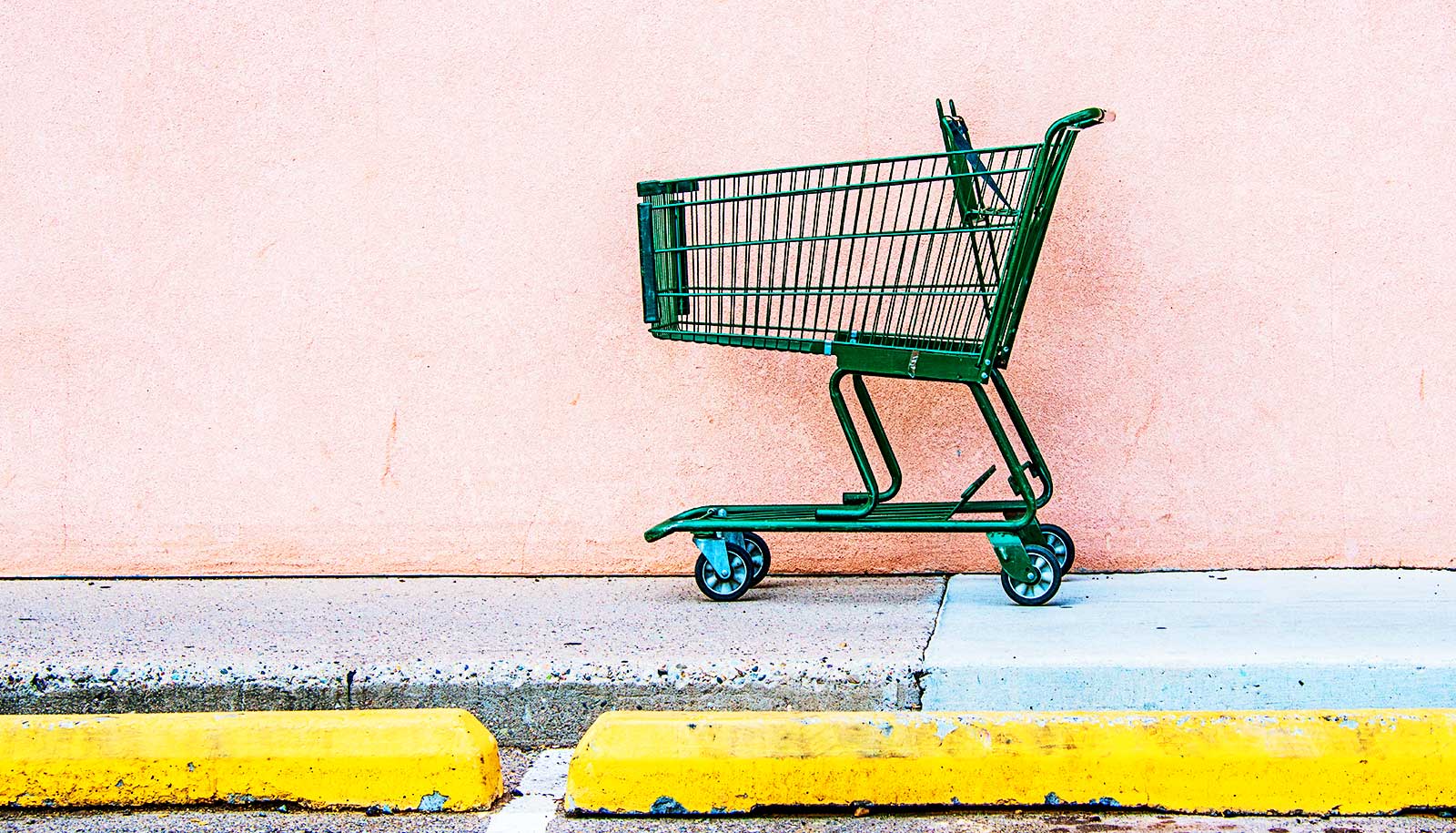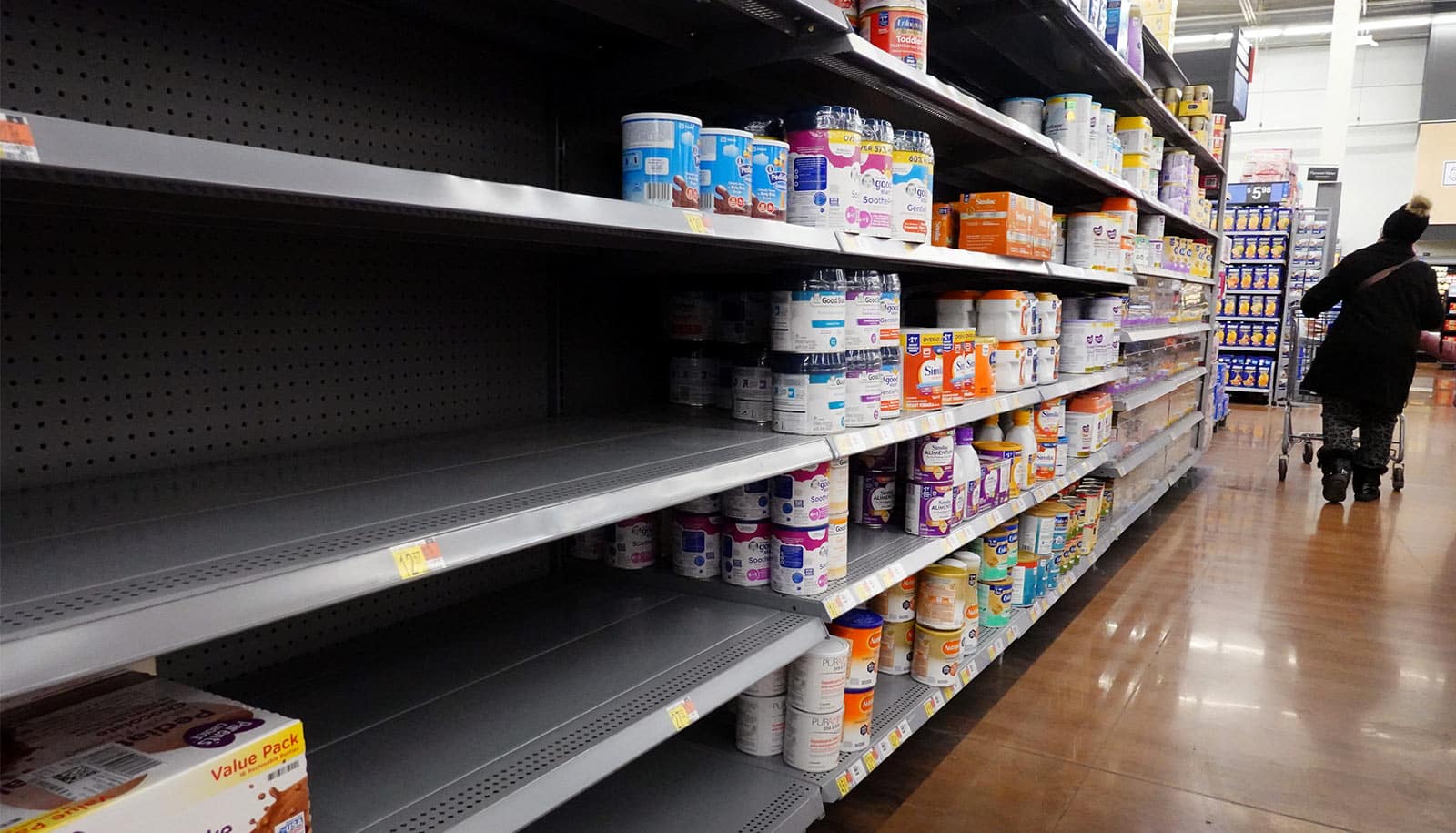George Alessandria has some answers about what’s causing product shortages, how long problems with the supply chain could last, and why government intervention would be counterproductive.
In the summer of 2021, Alessandria, a University of Rochester economist, wanted to buy his 12-year-old son a bicycle. They went to a store—then another, and another, and another—only to find a limited inventory of bikes. Sure, they could order the bike they wanted, as long as they were willing to wait a year.
Alessandria’s experience is not unusual. Consumers in the United States and elsewhere have been having a difficult time buying lumber, potatoes, cream cheese, paper products, and cars, among many other items.
As Alessandria points out, there were spikes in consumer demand for certain items at the beginning of the COVID pandemic. Then, once restrictions began easing, demand increased for other products, which put stresses on the global supply chains. And he says relief won’t come quickly.
Here, Alessandra explains how supply chain issues continue to reverberate through the American and global economies:
What is a supply chain?
The supply chain is the beginning-to-end process of getting products or materials to their final destination.
Alessandria: Supply chain is a catchall phrase to represent the movement of goods or parts from suppliers to the next stage of production. The product is adjusted, and then moves on to the next stage, which could be another producer or a retailer.
What’s meant by supply chain disruptions?
If it blocks the free flow of materials and products, it’s a supply chain disruption.
Alessandria: We’re talking about things that make it difficult to get products along the path from one producer to another. It’s like a river where stuff is heading downstream, but something blocks the flow of materials. It just takes longer for people to get the parts they need to produce. And that results in consumers not seeing items on store shelves.
How bad are the current supply chain shortages?
Supply chain shortages haven’t been this bad since 1972, during the Nixon administration.
Alessandria: This is the worst that it’s been in 50 years—and it’s probably getting worse, considering that China has been shutting down cities and production facilities. The massive lockdowns in Shanghai and Beijing will eventually ripple through the system again.
How did the supply chain issues start?
Problems with the supply chain started with COVID-19 and were compounded by strong consumer demand in the pandemic’s wake.
Alessandria: It all started with COVID-19 and the shutting down of ports and factories, which slowed down the movement of goods around the world. And then it just became hard to partially reopen the economy, since public health issues remained in play. That’s why we saw periodic closures of facilities and ports around the world all through 2021.
On top of that, the bounce-back in consumer demand has been stronger than what was anticipated. It’s like trying to push more and more stuff through a straw that shrank. It just doesn’t work well.
While the supply chain shortages started with COVID, they’re also due to increased consumer demand, which was fueled by the federal stimulus checks that we probably didn’t need to keep the economy recovering. We just didn’t understand how consumer demand was going to shift, once the pandemic began to ease.
Why are some products easier to find than others?
The further away a product is manufactured, the more susceptible it is to a supply chain disruption.
Alessandria: One reason is that some of the things we want are produced further away, which means there are more opportunities for disruptions. And part of it is just random. It could be that there’s a $1 part in a $25,000 car that isn’t available, so the car can’t be fully manufactured and sold. In other cases, operations at a company that’s the single supplier of a part—such as a microprocessor—may suddenly stop because of a fire or some other reason. Then, suddenly, capacity is offline, and rebuilding that capacity takes a long time.
Would it make sense to have more products produced in the United States in order to avoid disruptions aggravated by distance?
Shifting production to the United States would be a mistake, in part because of the many ways retailers have of dealing with shortages.
Alessandria: No, not at all. There are obviously efficiency gains from buying stuff where it’s more cheaply produced, which is often overseas. Most of the time, retailers have ways of dealing with shortages. For example, a retailer buying bikes from a guy in California may have to place fewer, smaller orders, but he has the option of buying a large quantity of bikes from Taiwan. Then, when there’s an especially bad shock like COVID, the retailer is able to adjust inventories because international trade provides an additional buffer.
Even in the case of essential products, it usually doesn’t make sense to shift production to the US. When the COVID pandemic began, computer chips were in short supply because there was a demand for 50 million computers and tablets for kids who were suddenly working from home. But that demand eventually leveled off. When a city becomes the host for the Super Bowl, prices for hotel rooms go up, but it isn’t cost-effective in the long run to build new hotels. By the same reasoning, we don’t build new factories to address rare spikes in demand.
Do supply chain problems cause inflation?
The impact supply chain issues have on inflation depends on whether the factors are transitory or long-run.
Alessandria: That’s part of a research project we’re working on right now. There are many factors that affect inflation—inflation being the change in the price level. There are long-run factors, and there are transitory factors. When it comes to the supply chain, those factors are mostly transitory and can lead to a surge in prices, but they won’t cause prices to consistently grow 6, 7, or 8% year in and year out. But those supply chain issues can absolutely contribute to a big increase in prices. The long-run effects depend on how policymakers respond.
Do supply chain issues increase the risk of an economic recession in the US?
Yes, although it’s always difficult to isolate the effects of one factor on the US economy.
Alessandria: Absolutely. There are so many things going on in the world right now that it’s hard to isolate one factor. But in our research, we found that these supply disruptions would lower economic activity by about one percentage point within six quarters of the start of the disruptions. So, the disruptions that we’re currently seeing could knock 4 to 5% off of industrial production in the next year or two, which is pretty substantial.
The Federal Reserve has raised interest rates, and Jerome Powell, the Fed chair, is committed to raising them further, if necessary. Was that a good move?
Higher interest rates should lower consumer demand, which is likely to put a damper on prices.
Alessandria: When interest rates go up, the economy generally slows down. We’re just pushing too much stuff through the pipeline right now, and maybe the efficient thing to do is to slow down economic activity, which will allow businesses to restock so that we can get into a better productive situation.
What impact does the Russia-Ukraine war have on global supply chains?
Russia’s war against Ukraine is making it more difficult to move goods.
Alessandria: Shipping routes have been blocked, which is slowing down the movement of goods around the world. At the same time, sanctions on Russia have stopped the flow of some goods. Those policies have consequences on the global economy. But the truth is that even if the oil from Russia doesn’t go to Europe, it’s going to go someplace else. That process of rejiggering where things go does create a temporary void that causes a drop in economic activity, which will be restored once new connections are made.
How and when will the supply chain issues end?
Consumers can expect to feel the effects of the disrupted supply chain for at least another year.
Alessandria: The war is really complicating things. Absent the war, I would have thought everything would go back to normal a year from now. But we’re still seeing these closures in China that reduce the supply of goods for production in other parts of the world. But I think we’ll have at least another year of low growth, high prices, and bare shelves.
Source: University of Rochester



